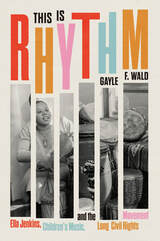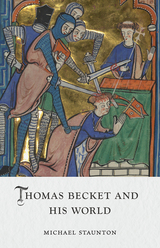
We live in an age where Hitler and the Nazis dominate our cultural imagination, shaping values once defined by religion. Historian Alec Ryrie explores why society remains captivated by this struggle, from history and fiction to modern myths such as Star Wars and Harry Potter. He examines the costs of our Nazi obsession and questions what will come as our anti-Nazi moral consensus frays and both the Left and Right begin to move on. With a fresh take on modern history and pop culture, The Age of Hitler and How We Will Survive It offers a thought-provoking look at the culture wars and our shifting political crises, challenging assumptions on both sides and asking what a new moral vision might look like.
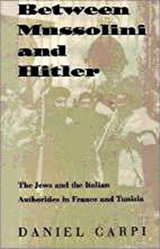
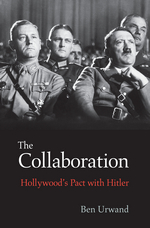
To continue doing business in Germany after Hitler's ascent to power, Hollywood studios agreed not to make films that attacked the Nazis or condemned Germany's persecution of Jews. Ben Urwand reveals this bargain for the first time—a "collaboration" (Zusammenarbeit) that drew in a cast of characters ranging from notorious German political leaders such as Goebbels to Hollywood icons such as Louis B. Mayer.
At the center of Urwand's story is Hitler himself, who was obsessed with movies and recognized their power to shape public opinion. In December 1930, his Party rioted against the Berlin screening of All Quiet on the Western Front, which led to a chain of unfortunate events and decisions. Fearful of losing access to the German market, all of the Hollywood studios started making concessions to the German government, and when Hitler came to power in January 1933, the studios—many of which were headed by Jews—began dealing with his representatives directly.
Urwand shows that the arrangement remained in place through the 1930s, as Hollywood studios met regularly with the German consul in Los Angeles and changed or canceled movies according to his wishes. Paramount and Fox invested profits made from the German market in German newsreels, while MGM financed the production of German armaments. Painstakingly marshaling previously unexamined archival evidence, The Collaboration raises the curtain on a hidden episode in Hollywood—and American—history.
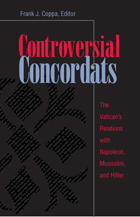

French trade unions played a historical role in the 1930s quite unlike that of any other labor movement. Against a backdrop of social unrest, parliamentary crisis, and impending world war, industrial unionists in the great metal-fabricating plants of the Paris Region carried out a series of street mobilizations, factory occupations, and general strikes that were virtually unique in Western history.
The unionization of the metal industry, following a series of anti-fascist demonstrations and plant seizures, would constitute the defining episode in modern French labor history and one of the great chapters in European social history. Yet little is known of these extraordinary events.
With a style that captures the vivid character of these experiences, Every Factory a Fortress tells the story of the Paris metal workers, who succeeded in organizing the largest Communist union in the Western world, reshaping the parameters of French social relations, and, ultimately, altering the course of French destinies.

West German filmmakers have tried to repeatedly over the past half-century to come to terms with Germany’s stigmatized history. How can Hitler and the Holocaust, how can the complicity and shame of the average German be narrated and visualized? How can Auschwitz be reconstructed? Anton Kaes argues that a major shift in German attitudes occurred in the mid-1970s—a shift best illustrated in films of the New German Cinema, which have focused less on guilt and atonement than on personal memory and yearning for national identity.
To support his claim, Kaes devotes a chapter to each of five complex and celebrated films of the modern German era: Hans Jürgen Syberberg's Hitler, a Film from Germany, a provocative restaging of German history in postmodern tableaux; The Marriage of Maria Braun, the personal and political reflection on postwar Germany with which Rainer Werner Fassbinder first caught the attention of American and European audiences; Helma Sanders-Brahms's feminist and autobiographical film Germany, Pale Mother, relating the unexplored role of German women during and after the war; Alexander Kluge's The Patriot, a self-reflexive collage of verbal and visual quotations from the entire course of the German past; and, finally, Edgar Reitz's Heimat, a 16-hour epic rendering of German history from 1918 to the present from the perspective of everyday life in the provinces.
Despite radical differences in style and form, these films are all concerned with memory, representation, and the dialogue between past and present Kaes draws from a variety of disciplines, interweaving textual interpretation, cultural history, and current theory to create a dynamic approach to highly complex and multi-voiced films. His book will engage readers interested in postwar German history, politics, and culture; in film and media studies; and in the interplay of history, memory, and film.

West German filmmakers have tried to repeatedly over the past half-century to come to terms with Germany’s stigmatized history. How can Hitler and the Holocaust, how can the complicity and shame of the average German be narrated and visualized? How can Auschwitz be reconstructed? Anton Kaes argues that a major shift in German attitudes occurred in the mid-1970s—a shift best illustrated in films of the New German Cinema, which have focused less on guilt and atonement than on personal memory and yearning for national identity.
To support his claim, Kaes devotes a chapter to each of five complex and celebrated films of the modern German era: Hans Jürgen Syberberg's Hitler, a Film from Germany, a provocative restaging of German history in postmodern tableaux; The Marriage of Maria Braun, the personal and political reflection on postwar Germany with which Rainer Werner Fassbinder first caught the attention of American and European audiences; Helma Sanders-Brahms's feminist and autobiographical film Germany, Pale Mother, relating the unexplored role of German women during and after the war; Alexander Kluge's The Patriot, a self-reflexive collage of verbal and visual quotations from the entire course of the German past; and, finally, Edgar Reitz's Heimat, a 16-hour epic rendering of German history from 1918 to the present from the perspective of everyday life in the provinces.
Despite radical differences in style and form, these films are all concerned with memory, representation, and the dialogue between past and present Kaes draws from a variety of disciplines, interweaving textual interpretation, cultural history, and current theory to create a dynamic approach to highly complex and multi-voiced films. His book will engage readers interested in postwar German history, politics, and culture; in film and media studies; and in the interplay of history, memory, and film.

Fascination with the evil of the Nazi regime has not diminished in the decades since Hitler assumed power in Germany, but the story of internal resistance to Nazism has not been as fully realized as have the innumerable tales of horror. In this compact book Peter Hoffmann examines the growing recognition by some Germans in the 1930s of the malign nature of the Nazi regime, the ways in which these people became involved in the resistance, and the views of those who staked their lives in the struggle against tyranny and murder.
The earliest postwar accounts of the resistance by survivors and witnesses were followed by a variety of investigations and evaluations. Peter Hoffrnann here presents a complete reconstruction of this baffling and intriguing story. After several decades of study of the German resistance to Nazism, he has unlocked the secrets of its inner history. Hoffmann recounts the methods of Hitler's rise to power in the tumultuous days of January and February 1933, the consolidation of his power as a result of the Röhm Massacre in 1934, and his growing criminality as evidenced by the rape of Czechoslovakia and the pogrom of 1938. The author describes the several attempts in 1938 and during the war years to dislodge Hitler from within; the desperation of the luckless opponents over the carnage of war and the mass murders that threatened to engulf them; and finally, the attempt to assassinate Hitler on July 20, 1944. Throughout, he probes the motives of the resisters. Some, for example, found it difficult to justify assassination, even for the purpose of bringing an end to mass killing. Hoffmann examines and discounts the accusation that the principal motive of those who resisted was to preserve their class privileges. The resisters, he concludes, acted not so much in the hope of personal gain as from a moral obligation to challenge the evils they saw before them.

Hitler and His Generals was first published in 1974. Minnesota Archive Editions uses digital technology to make long-unavailable books once again accessible, and are published unaltered from the original University of Minnesota Press editions.
The author, who told the story of second of four conspiratorial rounds in his earlier book The Conspiracy against Hitler in the Twilight War,describes here the situations and events leading up to the first round of conspiracy. The present volume deals with the virtual coup d'etat by which Hitler sought to establish ascendancy over the Wehrmacht early in 1938.
The account focuses on sensational events centering about Hitler's successful efforts to oust Field Marshal Werner von Blomberg, the War Minister, and Colonel General Baron von Fritsch, the Army commander in chief, in order to consolidate control of the military in his own hands. Using as an excuse Blomberg's marriage to a woman with a discreditable past, he forced Blomberg's resignation. He accomplished Fritsch's resignation through charges of homosexuality which were trumped up by Himmler, Heydrich, and Goering. He then appointed Colonel General Walther von Brauchitsch, who was under personal obligation to him, as commander in chief. Through these moves, as Dr. Deutsch shows, Hitler closed the door to all means other than conspiracy for the active Opposition movement to express itself against his aggressive policies. The story of the first round of conspiracy will be the subject of another book by Professor Deutsch, to be published later.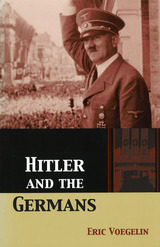
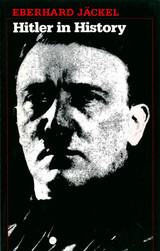
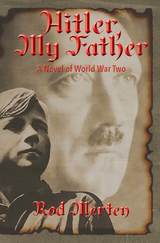
An adoring young woman encounters Adolph Hitler when her youth group sings for him. He demands her company in private, and she becomes pregnant, bearing his child but never being contacted by Hitler again. The plot follows her life as an outcast believed to be lying about the child’s parentage, and the life of her son told through her correspondence, diary entries, and from the point of view of a researcher who writes a generation later. Based on facts and documented history, author Ron Merten tells this tale with just enough creativity to make the story fascinating.
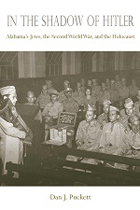
In this extensive study of how southern Jews in the United States responded to the Nazi persecution of European Jews, Dan J. Puckett recounts the divisions between Alabama Jews in the early 1930s. As awareness of the horrors of the Holocaust spread, Jews across Alabama from different backgrounds and from Reform, Conservative, and Orthodox traditions worked to bridge their internal divisions in order to mount efforts to save Jewish lives in Europe. Only by leveraging their collective strength were Alabama’s Jews able to sway the opinions of newspaper editors, Christian groups, and the general public as well as lobby local, state, and national political leaders.
Puckett’s comprehensive analysis is enlivened and illustrated by true stories that will fascinate all readers of southern history. One such story concerns the Altneuschule Torah of Prague and describes how the Nazis, during their brutal occupation of Czechoslovakia, confiscated 1,564 Torahs and sacred Judaic objects from communities throughout Bohemia and Moravia as exhibits in a planned museum to the extinct Jewish race. Recovered after the war by the Czech Memorial Scrolls Trust, the Altneuschule Torah was acquired in 1982 by the Orthodox congregation Ahavas Chesed of Mobile. Ahavas Chesed re-consecrated the scroll as an Alabama memorial to Czech Jews who perished in Nazi death camps.
In the Shadow of Hitler illustrates how Alabama’s Jews, in seeking to influence the national and international well-being of Jews, were changed, emerging from the war period with close cultural and religious cooperation that continues today.
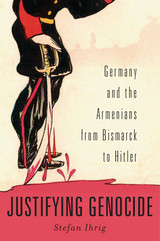
The Armenian Genocide and the Nazi Holocaust are often thought to be separated by a large distance in time and space. But Stefan Ihrig shows that they were much more connected than previously thought. Bismarck and then Wilhelm II staked their foreign policy on close relations with a stable Ottoman Empire. To the extent that the Armenians were restless under Ottoman rule, they were a problem for Germany too. From the 1890s onward Germany became accustomed to excusing violence against Armenians, even accepting it as a foreign policy necessity. For many Germans, the Armenians represented an explicitly racial problem and despite the Armenians’ Christianity, Germans portrayed them as the “Jews of the Orient.”
As Stefan Ihrig reveals in this first comprehensive study of the subject, many Germans before World War I sympathized with the Ottomans’ longstanding repression of the Armenians and would go on to defend vigorously the Turks’ wartime program of extermination. After the war, in what Ihrig terms the “great genocide debate,” German nationalists first denied and then justified genocide in sweeping terms. The Nazis too came to see genocide as justifiable: in their version of history, the Armenian Genocide had made possible the astonishing rise of the New Turkey.
Ihrig is careful to note that this connection does not imply the Armenian Genocide somehow caused the Holocaust, nor does it make Germans any less culpable. But no history of the twentieth century should ignore the deep, direct, and disturbing connections between these two crimes.
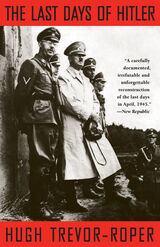
"From exhaustive research [Trevor-Roper] has put together a carefully documented, irrefutable, and unforgettable reconstruction of the last days in April, 1945."—New Republic
"A book sound in its scholarship, brilliant in its presentation, a delight for historians and laymen alike."—A. J. P. Taylor, New Statesman

This is a remarkable historical and psychological examination of the enigma of Adolf Hitler—who he was, how he wielded power, and why he was destined to fail.
Beginning with Hitler’s early life, Sebastian Haffner probes the historical, political, and emotional forces that molded his character. In examining the inhumanity of a man for whom politics became a substitute for life, he discusses Hitler’s bizarre relationships with women, his arrested psychological development, his ideological misconceptions, his growing obsession with racial extermination, and the murderous rages of his distorted mind. Finally, Haffner confronts the most disturbing question of all: Could another Hitler rise to power in modern Germany?

David Kaiser looks at four hundred years of modern European history to find the political causes of general war in four distinct periods (1559–1659, 1661–1713, 1792–1815, and 1914–1945). He shows how war became a natural function of politics, a logical consequence of contemporary political behavior. Rather than fighting simply to expand, states in each war fought for specific political and economic reasons. The book illustrates the extraordinary power of politics and war in modern Western civilization, if not in history as a whole.
In a provocative and original new preface and chapter, Kaiser shows which aspects of four past areas of conflict do, and do not, seem relevant to the immediate future, and he sketches out some new possibilities for Europe.
READERS
Browse our collection.
PUBLISHERS
See BiblioVault's publisher services.
STUDENT SERVICES
Files for college accessibility offices.
UChicago Accessibility Resources
home | accessibility | search | about | contact us
BiblioVault ® 2001 - 2025
The University of Chicago Press





